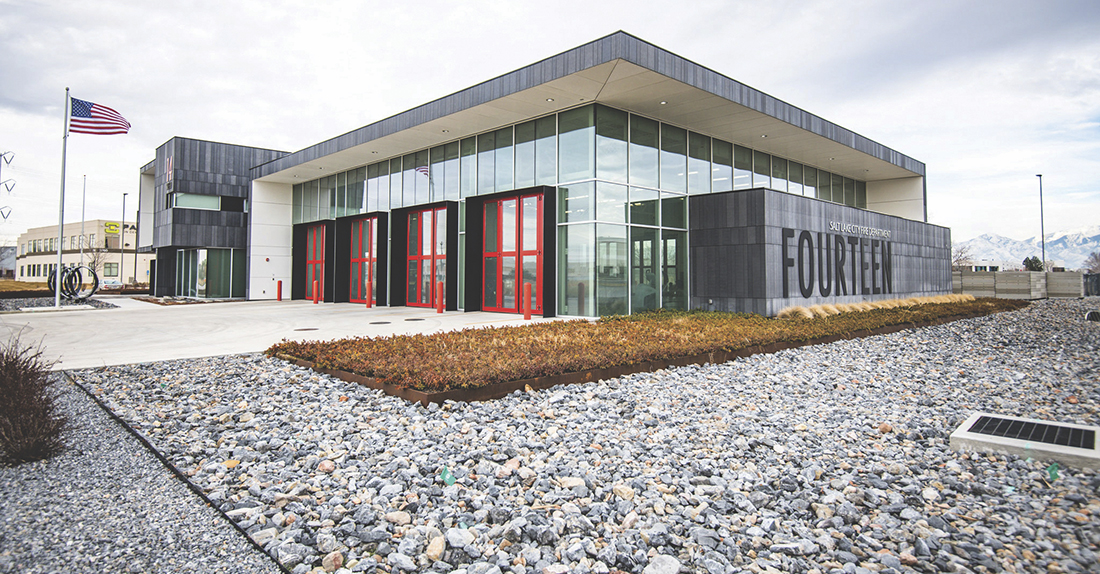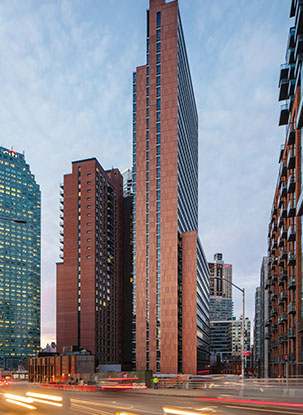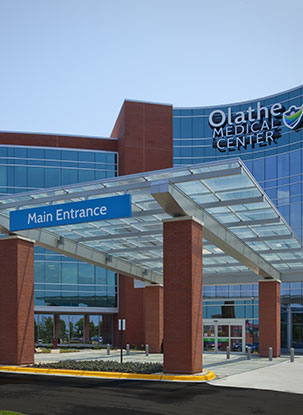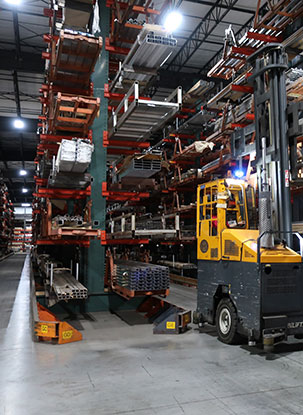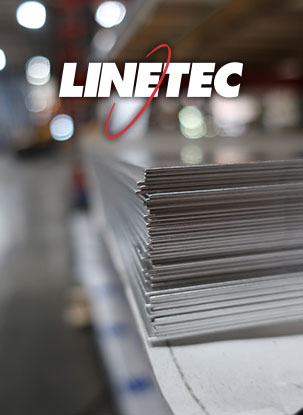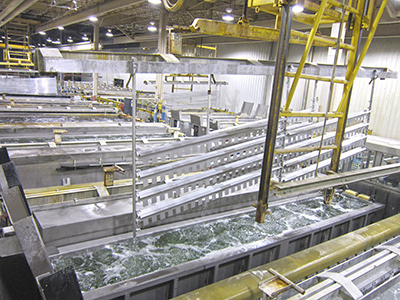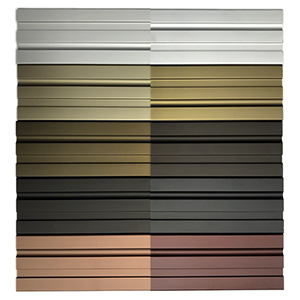Anodize is a durable, hard finish for aluminum that creates a long-lasting surface. For architectural applications, Class I or Class II anodized is designated. But what is the difference? To understand the optimal anodize choice for your building products and projects, let’s begin with a quick overview about this finish.
What is anodize?
Anodization is a process that increases the natural protective oxide layer on aluminum. By electrochemically controlling, accelerating and enhancing oxidation of an aluminum substrate, anodizing produces an oxide film that is uniform and protects the rest of the aluminum from deterioration. Architectural anodize creates an extremely durable integral coating with exceptional hardness that is comparable to a sapphire.
Why choose anodize?
Anodize is an excellent choice for use in high-traffic areas where resilience is important. Specified to meet AAMA 611, anodize finishes retain their color and gloss, and provide excellent wear and abrasion resistance with minimal maintenance in most environments.
Anodized aluminum is an inert material that is noncombustible, is 100% recyclable and poses no health risks, making it a smart choice for projects with environmentally friendly building initiatives and LEED certification.
What does anodize look like?
Linetec’s eco-friendly etch process produces a smooth, uniform finish with a frosty, matte appearance. “Clear” anodize is an uncolored finish that highlights the natural, silver tone of the aluminum.
After anodization, the aluminum parts can be immersed in optional coloring tanks. Anodize colors typically range from champagne to dark bronze to black. Darker colors are created by extending the immersion time and increasing metal deposition.
Beyond the standard palette, Linetec also offers Copper and Bordeaux Anodize specialty finishes that are created using a propriety process, small amounts of actual copper deposition and precisely timed immersion.
What are Class I and II?
For architectural building products such as window and curtainwall framing, doors and entrances, sunshades and canopies, AAMA 611 “Voluntary Specification for Anodized Architectural Aluminum” is the industry-leading specification standard. Published by the Fenestration and Glazing Industry Alliance (FGIA), this document references The Aluminum Association’s “Designation System for Aluminum Finishes” Anodic Coatings classifications: Architectural Class I and Architectural Class II.
The main difference between these two classifications is the coating’s dry film thickness. An Architectural Class II anodic coating has a minimum mil thickness of 0.4 (10 microns) and an Architectural Class I anodic coating is almost twice as thick with a mil thickness of 0.7 (18 microns) or greater.
Architectural Class I and Class II anodic coatings should not be confused with Type I, Type II, and Type III anodic coatings as described in MIL-PRF-8625, “Anodic Coatings for Aluminum and Aluminum Alloy,” which largely is used by U.S. military. In this standard, Type I anodize refers to chromic acid anodizing. Type II is normal “clear” sulfuric acid anodizing. Type III is “hardcoat” using sulfuric acid or mixed chemistry electrolytes.
Which Class should be used?
As the thinner finish, an Architectural Class II anodic coating is suited for interior applications or light exterior applications receiving regularly scheduled cleaning and maintenance. In architectural use, the color is almost always limited to clear anodize. While Class II coatings offer good hardness, they are not as durable or wear resistant as a Class I finish.
An Architectural Class I anodic coating is a high-performance finish used primarily for exterior building products and other applications that must withstand continuous outdoor exposure or use. AAMA 611 requires Class I to pass 3,000 hours of accelerated salt spray testing compared to 1,000 hours for Class II. Class I anodize finish’s proven performance demonstrates it is well-suited for coastal environments and high traffic areas.
Linetec’s Class I anodize finishes are supported with a standard warranty of five years with optional extension. We warrant that the finish will not chip, crack, peel (adhesion), chalk or color change/fade. No warranty is available for Class II anodize.
By choosing Linetec as your single source aluminum finisher, you can be assured our anodize finish will meet your project’s specifications. Contact us to learn more about our anodize finish options.
